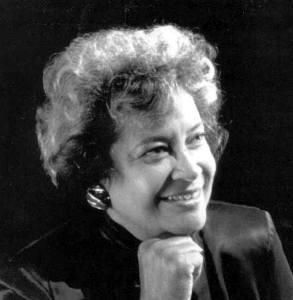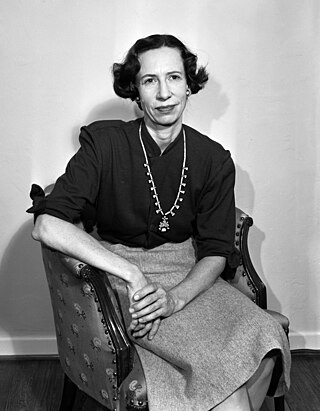Related Research Articles

Richard Joseph Neutra was an Austrian-American architect. Living and building for most of his career in Southern California, he came to be considered a prominent and important modernist architect. His most notable works include the Kaufmann Desert House, in Palm Springs, California.

Julia Morgan was an American architect and engineer. She designed more than 700 buildings in California during a long and prolific career. She is best known for her work on Hearst Castle in San Simeon, California.

Norma Merrick Sklarek was an American architect. Sklarek was the first African American woman to become a licensed architect in the states of New York (1954) and California (1962), as well as the first Black woman to become a member of the American Institute of Architecture (AIA). Her notable works include the United States Embassy in Tokyo, Japan (1976) and the Terminal One station at the Los Angeles International Airport (1984).Sklarek is credited with helping to pave the way for other female and minority architects. AIA board member Anthony Costello called her the “Rosa Parks of architecture” in the AIA newsletter.
Esther McCoy was an American author and architectural historian who was instrumental in bringing the modern architecture of California to the attention of the world.
Alice Constance Austin (1862–1955) was an American architect, city planner, radical feminist, socialist, designer and utopist. Her most famous proposal at Llano del Rio, though never fully realized, greatly impacted later city designs and architectural planning. In 1935, Austin published her book The Next Step; How to Plan for Beauty, Comfort, and Peace with Great Savings Effected by the Reduction of Waste, discussing socialism, difficulties with the Llano del Rio project, and some of her other ideas on planning. Her feminist efforts in the history of city planning have gone so far as to influence the development of modern-day issues such as minimum wage, social security, low cost housing, welfare, and universal healthcare.
Dolores Hayden is an American professor emerita of architecture, urbanism, and American studies at Yale University. She is an urban historian, architect, author, and poet. Hayden has made innovative contributions to the understanding of the social importance of urban space and to the history of the built environment in the United States.
Dora L. Costa is an American economics professor at the University of California, Los Angeles where she is the Kenneth L. Sokoloff Professor of Economic History. She is also the department chair of the economics department. In addition to her teaching position, Costa is a research associate at the National Bureau of Economic Research (NBER).

Alejandra Lillo is an American designer.

Greta Magnusson-Grossman was a Swedish furniture designer, interior designer, and architect. She was one of the few female designers to gain prominence during the mid-20th century architectural scene in Los Angeles. Her early exposure to European Modernism deeply influenced her later architectural work, seen as a synthesis of European ideals and the culture and lifestyle of Southern California.
Dana Cuff is an American architecture theorist, professor of architecture and urban design, and founding director of cityLAB at the University of California, Los Angeles (UCLA).
Hodgetts + Fung, also known as HplusF, is an interdisciplinary design studio based in Culver City, California specializing in architectural design, advanced material fabrication, historical restorations, and exhibition design and is led by principals Craig Hodgetts and Hsinming Fung.
Julius Ralph Davidson or JR Davidson was a Mid-century modern American architect known for advancing modern architecture in Los Angeles and participating in Arts & Architecture magazine's Case Study House Program.

Rebecca L. Binder is an American architect, designer, and educator. She established R. L. Binder FAIA Architects, LLP, in 1979, in Playa del Rey, California. In 1990, Binder was named a Fellow of the American Institute of Architects. Her work has received significant recognition, including local, state and national awards. In 2001, the American Institute of Architects California Chapter presented Binder with the California "Firm of the Year" award.

Olive Kingsley Chadeayne was an American architect who worked primarily in California from 1927 to 1970.

Ruth Patricia Shellhorn, FASLA (1909–2006) was among the most important Southern California landscape architects of the post-war era. Shellhorn designed more than four hundred projects over the course of six decades. The most influential of these were the landscape designs she created for the new Bullock's department stores and Fashion Square shopping centers.These were modernist landscape designs, evoking a sun-soaked, leisurely lifestyle that came to epitomize the "Southern California look."

Rose Connor was an American architect. Called "one of the earliest and most successful women architects of the 20th century", her architectural work was largely residential projects in Southern California, but she also did work for the U.S. military and Fuller Theological Seminary.
Davida Rochlin is an American architect, active primarily in Los Angeles and Southern California. Her work includes residential and commercial buildings and is notable for its emphasis on green and passive design concepts. She is known for her research on the American porch, which began with her Master's in Architecture thesis at the University of California, Berkeley College of Environmental Design and continued throughout her career. Rochlin is LEED Homes and Living Future Accredited.
Anastasia Loukaitou-Sideris is a Greek-American academic. She is a Distinguished Professor of urban planning and urban design at UCLA. She is also a core faculty of the UCLA Urban Humanities Initiative. She served as Associate Provost for Academic Planning at UCLA from 2016-2019, and she has been the Associate Dean of the UCLA Luskin School of Public Affairs since 2010. She was the chair of the UCLA Department of Urban Planning from 2002-2008. She is a public space scholar and has examined transformations in the public realm and public space in cities, and their associated social meanings and impacts on urban residents. An underlying theme of her research is its user focus, as it seeks to comprehend the built environment from the perspective of different, often vulnerable, user groups.
Sarah Louise Meeker Jensen, FAIA, is an American architect, licensed general contractor, LEED-certified professional, healthcare planner, and founder of the firm Jensen Partners.
Lois Wilson Langhorst was an American architect and educator, known for her influential contributions to modernist architecture and her pioneering role in a predominantly male field. Her work in the San Francisco Bay Area alongside her then-husband, Fred Langhorst, was under the firm Langhorst and Langhorst, Architects. Her career was cut short due to discriminatory practices against women in the field of architecture during that time period.
References
- ↑ Doumato, Lamia (1988). Architecture and Women: A bibliography documenting women architects, landscape architects, designers, architectural critics and writers, and women in related fields working in the United States. New York: Garland Pub. p. 84.
- 1 2 3 4 5 6 "University of California: In Memoriam, April 1963". texts.cdlib.org. Retrieved 2023-08-03.
- ↑ Women in American architecture : a historic and contemporary perspective : a publication and exhibition organized by the Architectural League of New York through its Archive of Women in Architecture. New York: Whitney Library of Design. 1977. ISBN 978-0-8230-7485-3.
- 1 2 3 4 greta gray (1935). house and home. j. b. lippincott company.
- ↑ "Interactive Timeline: Women at MIT". MIT Office of Innovation. Retrieved 2023-08-03.
- ↑ "Alumni Notes". State Normal School Journal. 12 December 1918. p. 4. Retrieved 3 August 2023.
- ↑ "Cooking and Cleaning 101". Daily Bruin. Retrieved 2023-08-03.
- ↑ Gray, Greta (1935). House and Home: A Manual and Textbook of Practical House Planning. J. B. Lippincott.
- ↑ Gray, Greta (1932–1933). "Changes in the Household Resulting from the Industrial Revolution". Social Forces. 11 (2): 242–248. doi:10.2307/2569781. JSTOR 2569781.
- ↑ Gray, Greta; Wolfe, Violet (1933). "Food Expenditures of Seven Industrial Families in Los Angeles". Social Science. 8 (1): 34–41. ISSN 0037-7848. JSTOR 41885449.
- ↑ Gray, Greta; Staples, Ruth (1928). "Housing Needs of Children". Social Forces. 7 (2): 250–252. doi:10.2307/2570149. ISSN 0037-7732. JSTOR 2570149.
- ↑ "Apron Strings and Kitchen Sinks | Working Kitchen Plans · Kitchen and Farmhouse Design Plans". www.nal.usda.gov. Retrieved 2023-08-03.
- ↑ Gray, Greta (1934). "The Skin, Clothing, and Health" . The Journal of Health and Physical Education. 5 (10): 30–46. doi:10.1080/23267240.1934.10619685 – via Taylor and Francis.
- ↑ Gray, Greta (March 1947). "Expenditures for Shelter". Yale Journal of Biology and Medicine. 19 (4): 713–722. PMC 2602390 . PMID 20245617.
- ↑ Gray, Greta (1926). Convenient kitchens. National Agricultural Library U. S. Department of Agriculture. Washington, D.C. : U.S. Dept. of Agriculture.
This article needs additional or more specific categories .(August 2023) |